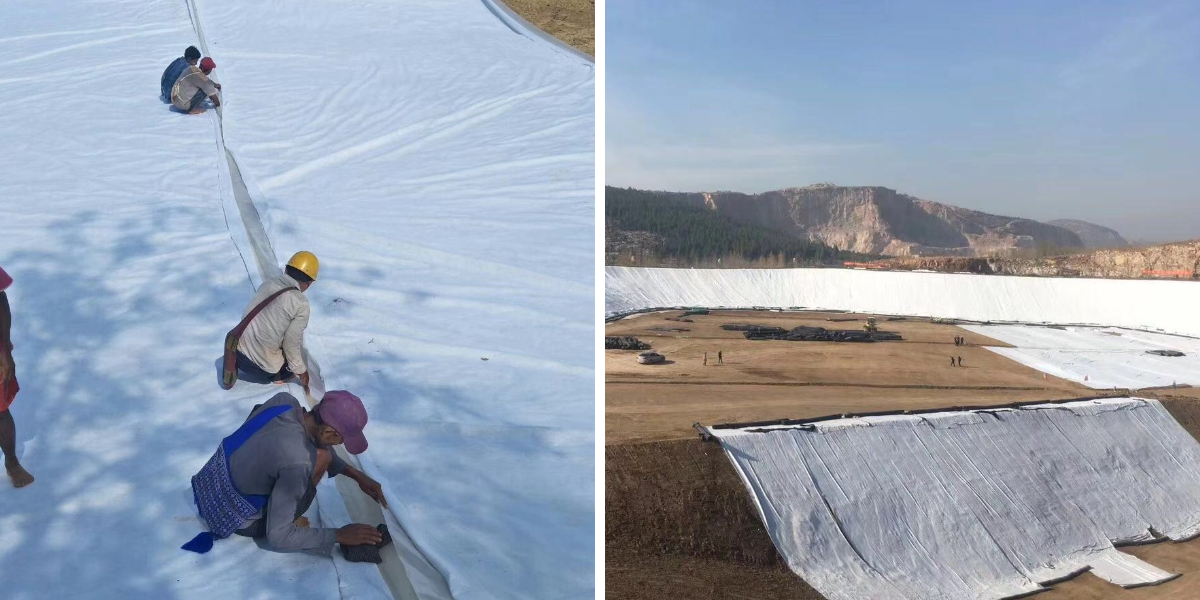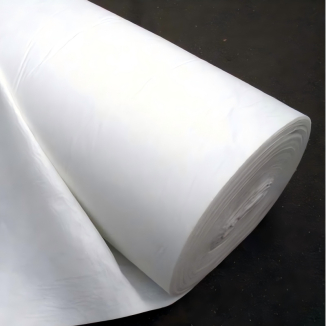Composite Geotextile vs. Traditional Geotextiles: Key Differences Explained
When planning a civil engineering, environmental, or development project, choosing the propergeosynthetic substances is a indispensable selection that influences the project's longevity, stability, and cost-effectiveness. For years, normal geotextiles have been the go-to solution. However, a extra superior alternative has emerged as a effective alternative: the composite geotextile. Understanding the key variations between these substances is imperative for making an knowledgeable preferencethat ensures the success and sturdiness of your project.
Introduction to Geotextiles: Function and Purpose
Geotextiles are permeable fabric used in conjunction with soil, succesful of separating, filtering, reinforcing, protecting, or draining. They are the workhorses of present day geotechnical engineering. Traditionally, these fabric are divided into two fundamental categories: woven and non-woven geotextiles. While they serve their functions well, every normal kind has inherent limitations. This is the place the revolutionary format of a composite geotextile comes into play, combining the quality homesof more than one substances into a single, high-performance product.
What Are Traditional Geotextiles?
Traditional geotextiles are single-layer fabric manufactured from artificial polymers like polypropylene or polyester. Their overall performance is described by using their manufacturing process.
Woven Geotextiles
Woven geotextiles are created by using interlacing yarns in a normal pattern, tons like garb fabric. This shape presents excessive tensile electricity and low elongation, making them exceptional for soil reinforcement and stabilization applications, such as beneath roadways and embankments. However, their permeability and filtration abilities can be constrained due to their tight weave.
Non-Woven Geotextiles
Non-woven geotextiles are made from randomly oriented fibers that are bonded collectively thrumechanical, thermal, or chemical means. This random shape creates a felt-like material that is best for separation, filtration, and drainage. They permit water to go with the flow via whilst stopping soil particles from migrating. Their major hassle is decrease tensile energy in contrast to their woven counterparts.
What is a Composite Geotextile?
A composite geotextile is an engineered geosynthetic product that combines two or greater special substances to create a single, multifunctional layer. The most frequent and effective kind of composite is a geotextile-geonet composite or a geotextile-geomembrane composite. By bonding a non-woven geotextile to a geomembrane, for instance, you create what many think about the first-class composite geomembrane answer for complicated barrier projects.
The genius of this plan lies in its synergy. A composite geotextile isn't always simply two fabricstitched together; it is a unified product the place every factor compensates for the weaknesses of the other, ensuing in a cloth that performs a couple of features concurrently and extra successfully than any single layer could.
Head-to-Head: Key Differences and Advantages
The essential distinction lies in functionality. Traditional geotextiles are specialists, excelling in one or two important functions. A composite geotextile is a multi-talented generalist, designed to function various imperative roles at once.
1. Multifunctionality vs. Single-Purpose Design
Traditional Geotextiles: A woven geotextile is magnificent for reinforcement however much less positive for drainage. A non-woven is extraordinary for filtration however lacks excessive tensile strength. You frequently want to layer more than one standard geotextiles to reap one-of-a-kindfunctions, which will increase set up time and complexity.
Composite Geotextile: A single roll can supply separation, filtration, drainage, and reinforcement concurrently. For example, a geotextile-geonet composite gives a high-strength drainage core, making it vastly greater environment friendly than putting in separate layers.
2. Drainage and Filtration Capabilities
This is a important vicinity the place composites shine. A normal non-woven geotextile can filter water, however it can't correctly deliver water laterally. A composite geotextile that consists of a drainage core (like a geonet) acts as a "drainage pipe in a sheet," accumulating and channeling water or gases away from vital areas. This is useful in landfill caps, roof gardens, and at the back of keepingwalls.
3. Impermeability and Barrier Performance
Traditional geotextiles are, via nature, permeable. They can't act as a fluid barrier. When a undertakingrequires containment—preventing leachate from escaping a landfill or defending groundwater from contamination—a regular geotextile is insufficient. This is the place the thought of an Impermeable Geotextile is fulfilled through composites. By laminating a geotextile to a geomembrane, you create the first-rate composite geomembrane system. The geotextile factor protects the refined geomembrane from puncture and presents a drainage course for gases, whilst the geomembrane itself offers the critical impermeable barrier.
4. Protection and Puncture Resistance
Geomembranes are brilliant obstacles however can be susceptible to puncture from sharp aggregates or uneven subgrades. Installing a composite geotextile that consists of a thick, cushioning non-woven layer on one or each facets of the geomembrane dramatically enhances its puncture resistance. This shielding feature extends the provider existence of the whole containment system, making a composite the desired desire for disturbing applications.
5. Long-Term Performance and Durability
The built-in format of a composite geotextile frequently leads to choicest long-term performance. By managing stresses, filtration, and drainage in a unified system, it reduces the threat of clogging (blindness) in the geotextile issue and minimizes differential contract that can stress man or womanlayers. This built-in strategy ensures the whole device works in concord for decades.
When to Choose a Composite Geotextile Over Traditional Options
Your project's precise necessities will dictate the first-class material. Choose a typical geotextile for simple applications:
●Simple separation between soil layers beneath a road.
●Basic filtration in a subsurface drain.
Upgrade to a composite geotextile for extra complex, multi-faceted challenges:
●Landfill Systems: For liners, caps, and leachate series layers, the nice composite geomembrane optionsare quintessential for combining barrier overall performance with drainage and protection.
●Tunnel and Underground Structures: Where drainage, filtration, and safety of a waterproofing membrane are wished simultaneously.
●Environmental Containment: Any task requiring an Impermeable Geotextile barrier, such as in secondary containment for gasoline storage or mining heap leach pads.
●Complex Civil Projects: Behind holding walls, in plaza decks, and below sports activities fields the place high-performance drainage is critical.
Contact Us
Company Name: Shandong Chuangwei New Materials Co., LTD
Contact Person :Jaden Sylvan
Contact Number :+86 19305485668
WhatsApp:+86 19305485668
Enterprise Email: cggeosynthetics@gmail.com
Enterprise Address: Entrepreneurship Park, Dayue District, Tai 'an City,
Shandong Province








